
All categories
Featured selections
Trade Assurance
Buyer Central
Help Center
Get the app
Become a supplier

(905 products available)

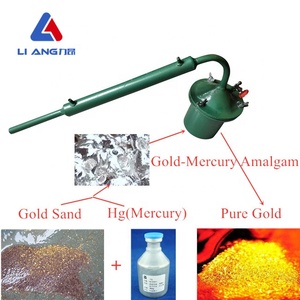


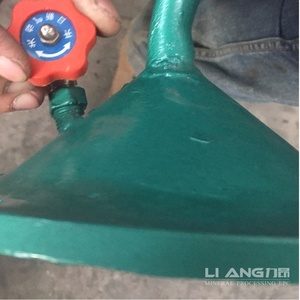
















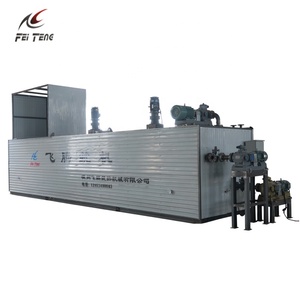

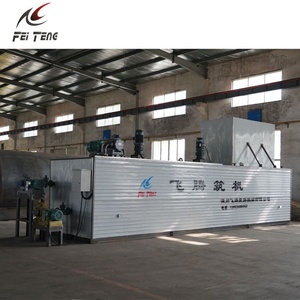











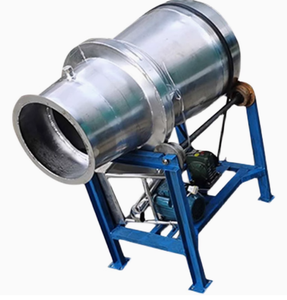


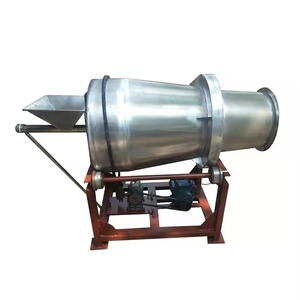
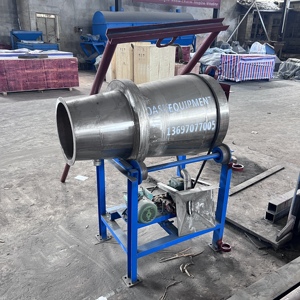
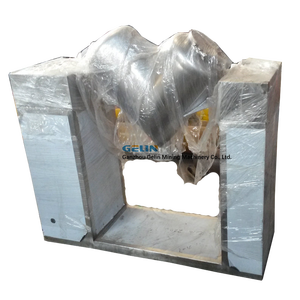
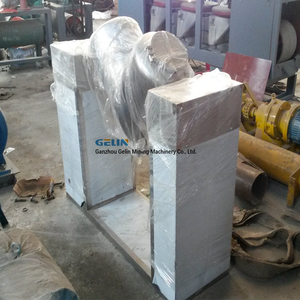










There are several types of gold amalgamation machines, each designed to cater to specific mining needs and scales of operation. These machines range from simple, manual-operated devices to more advanced, mechanized systems.
Amalgamation Plates
Amalgamation plates, also known as mercury plates or mercury retorts, are widely used in small-scale mining operations. These plates are usually made of metal and have a textured or grooved surface.
The plates are coated with mercury, allowing the gold to be captured while letting other materials pass through. Amalgamation plates are simple to use and cost-effective for small mining operations.
In large operations, amalgamation plates can be part of shaking tables or other concentration machines.
Amalgamation Barrel
The amalgamation barrel is a machine that combines gold recovery with ore grinding. It is often used in small to medium-scale mining operations. The ore, mercury, and water are all added to the barrel.
After that, a stirring or rotating action either through mechanical means or by a hand, causes the amalgamation process. As the ore interacts with mercury, the gold binds with it to create amalgam which is later extracted from the mixture.
Amalgamation Corral
This is a large, enclosed area where crushed ore is spread out in a thin layer. Mercury is then applied to the ore to capture the gold. Amalgamation corrals are suitable for larger quantities of ore or when processing ores with low gold content.
Amalgamation Tables
Amalgamation tables resemble gravity concentration tables. These tables use a combination of amalgamation and gravity separation to recover gold. The ore is first crushed and then mixed with mercury on the table.
The table surface is then slightly inclined. Through this, a small amount of water is run over it to create a slurry. The gold binds with the mercury while the mercury is collected along with the amalgam. Manufacturers commonly find amalgamation tables in small-scale mining facilities.
Rotary Vacuum Amalgamation
This type of amalgamation machine uses a rotary drum followed by a vacuum system to separate the amalgam from the ore. This is done by first coating the surface of a rotary drum with mercury.
As the drum rotates, ore particles come into contact with the mercury-coated surface. In doing so, the particles containing gold amalgamate with the mercury. The vacuum system is then used to separate the amalgam from the remaining ore.
Amalgamation Crushers
Also known as amalgamation grinders, which blend amalgamation with crushing. These machines are designed to crush ore and capture the released gold-mercury amalgam in one process. The amalgamation crusher is suitable for small-scale operations that require a more efficient processing method.
Small-Scale Gold Mining
Amalgamation machines are widely used in small-scale gold mining operations throughout the world. This is because they allow miners to efficiently extract gold from ore with a combination of amalgamation and ore grinding.
Artisanal Gold Mining
They are also useful for artisanal gold miners who work with limited resources. In fact, the portability and affordability of some amalgamation machines make them suitable for artisanal mining. Mercury is readily available to artisanal miners and is usually applied directly to ore processing methods.
Recovery of Low-Grade Gold ore
Amalgamation machines are helpful for recovering gold from low-grade ore where other methods may not be economically viable. In such cases, amalgamation can enhance gold recovery by capturing small particles that are otherwise lost.
Merger with Other Mining Techniques
Amalgamation is commonly used alongside other gold recovery methods like gravity separation in a process called multi-step amalgamation. This method improves overall gold recovery by first concentrating the ore before amalgamating it.
Historical Gold Processing
Amalgamation machines for gold have long been used in industrial applications. These include large-scale gold mining operations during the 19th and 20th centuries. The most famous of these are the cyanide and chlorination methods for extracting gold from ores.
Modern Gold Extraction
As such, amalgamation machines have been adapted for modern gold mining practices. This is especially the case with artisanal and small-scale mining (ASM) operations which rely on mercury amalgamation for their mining processes.
Amalgamation machines for gold have a myriad of features and specifications that enable the efficient extraction of gold from ore. Below is a breakdown of these key features.
Inlet and Outlet Diameter:
Amalgamation machines have an inlet diameter that ranges from 50 millimeters to 100 millimeters. Their outlet diameters are usually 20 millimeters to 50 millimeters.
Rotation Speed:
The rotation speed of amalgamation barrels typically ranges from 10 to 60 revolutions per minute (RPM). This factor is dependent on the specific type of ore and the required level of amalgamation.
Power Requirements:
This largely depends on the amalgamation machine’s mode of operation. For instance, electric amalgamation machines have power requirements that range from 0.5 to 5 kilowatts.
On the other hand, manual machines have labor which is the primary source of their power.
Barrel Material:
Manufacturers usually make amalgamation barrels either from steel or high-density polyethylene (HDPE). Steel amalgamation barrels are mostly found in industrial setups. In these spaces, users are looking for durable long-lasting options. HDPE amalgamation barrels are lightweight and corrosion-resistant and are suitable for small-scale operations.
Water Consumption:
Water consumption requirements are usually between 10 liters to 50 liters per hour. This is however dependent on the size and type of the amalgamation machine.
Machine Dimension:
Small-scale machines have smaller dimensions compared to their large-scale counterparts. With that in mind, amalgamation machines typically measure 1 meter to 2 meters in length and 0.5 meters to 1 meter in width.
Mercury Recovery Rate:
This goes without saying, but amalgamation machines have mercury recovery rates that range from 80% to 95%. The recovery rate, however, does depend on the machine type and efficiency.
Placement near Power and Water Sources
Amalgamation machines should be placed close to a reliable power source and water supply. This eases operation since water and power accessibility are vital to the mining processes.
Preparation of Stable Base
Optimal working and mining conditions are a prerequisite for amalgamation machines to achieve proper output. For this reason, users should ensure that amalgamation machines are placed on stable and level ground to eliminate cases of machine vibration which in turn affect the mining processes.
Assembly according to Manufacturer Guidelines
Amalgamation machine designs differ from one manufacturer to another. That is why it is important for users to refer to specific manufacturers’ assembly instructions. This ensures proper mechanism functioning and reduces instances of amalgamation machine associated challenges. For more information, users can check out manufacturers’ websites for more installation insights.
Secureness of Components
This refers to the need for users to properly secure all components such as barrels, motors, and frames. When secured, it, therefore, prevents any components from becoming loose over time. As one of the final steps, amalgamation machines users should connect all electrical components and ensure it is properly earthed to reduce electrocution cases.
Preparation of Ore
Users should begin by preparing the ore before using the amalgamation machines. They do this by crushing it to smaller particle sizes for easy mercury-gold amalgamation. After crushing, the ore is fed into the amalgamation machine's barrel or container.
Addition of Mercury
Once the ore is in the amalgamation machine, users should add a controlled quantity of mercury. Add the mercury slowly to the ore. This helps to reduce the formation of large amalgam masses that are difficult to come by when they settle at the bottom.
Besides that, users should wear protective gloves when handling mercury to reduce inhalation and skin contact which in turn causes mercury poisoning.
Turning On the Machine
Next, users should power on the amalgamation machine. This then begins the mixing process that manufacturers have internalized in the amalgamation machine. For mechanized machines, users should adjust speed settings to recommended rates depending on which ore the machine is processing.
Data has shown that higher speeds usually give finer amalgam while lower speeds give coarse amalgam. It is vital to conduct prior test runs to determine the optimal speed setting for amalgamation.
Time Monitoring
As amalgamation occurs, users should carefully monitor the time. Usually, amalgamation should occur for around 20 minutes to 1 hour depending on the amount of ore been processed and the particle size within it.
Extraction of Amalgam
After the specified amalgamation time has lapsed, users should turn off the amalgamation machines. This, therefore, allows the amalgam to settle at the bottom and the remaining processed ore to be at the top. Next, extract the amalgam from the machine’s bottom. The amalgam is usually a sticky and pasty substance that contains a mixture of mercury and gold dust.
Separation of Gold and Mercury
The last step is separating the gold from amalgam, with the most popular methods being distillation and retort. During amalgam distillation, heat is applied to vaporize mercury. It then leaves behind a fine concentrated of gold. Retorts are devices that chemically and efficiently recover mercury for future use.
Machine Cleaning
Amalgamation machines normally accumulate ore residue and mercury over time. That is why it is important to frequently clean the machine after each use. Users should use a broom or brush to remove a large portion of the amalgamation dust from the machines' surface.
For contaminants that are stuck in hard-to-reach places, users should use a damp cloth to wipe them down. This also leaves their machines looking neat and clean. However, it is imperative never to dispose of mercury carelessly or into the environment for safety reasons.
Check for Wear and Tear
Amalgamation machines have several components including mixing barrels and internal blades that endure constant stress and mechanical wear. In this case, users should regularly check and inspect for signs of wear and tear. Some of the common signs include unusual noises or reduced mixing efficiency.
Periodic inspection and replacement of worn-out parts goes a long way in ensuring the machine performs optimally. In this situation, users should have a written schedule of certain aspects like components to frequently check and replace.
Lubrication of Parts
Internal moving parts, if not well taken care of, tend to friction and eventually wear out. This also applies to amalgamation machines. That is why regular lubrication of internal moving parts prolongs the lifespan of those machines. A good example of these parts that need constant lubrication are bearings.
Users should check them from time to time to ascertain they have enough lubricant. This goes a long way in reducing friction as well as enhancing smoothness during the amalgamation machine operations.
Electrical Component Check
Their electrical amalgamation machines come with electrical components to employ power in mercury amalgamation processes. That is why it is imperative to frequently check electrical components. These components include power cords and motors to avoid cases of short circuits and electrical fires. So much so, testing and replacing damaged wires and components hastens electrical amalgamation machine safety.
Amalgamation machines for gold have several quality and safety considerations worth acknowledging. These factors also ensure the machine operates effectively while minimizing potential hazards to the workers.
Machine Quality
Users ought to prioritize high-quality amalgamation machines to enhance safety and effectiveness when processing gold ore. They should also conduct research on reputable manufacturers known for producing durable machines. Such machines are made from high-quality materials like stainless steel or heavy-duty plastic to guarantee high resistance to mercury's corrosive effects.
Besides that, people also have to ensure amalgamation machines have strong build and design. Machines with solid and stable designs minimize vibrations during operation. This, therefore, reduces the risk of the machine toppling over and injuring nearby workers.
Furthermore, such machines also come with well-protected moving parts and have clear safety covers over dangerous areas. These minimize accidents due to unintended contact. Users should also ensure all electrical and mechanical components have proper encasements to “cut” off instances of electrical shocks happening to the workers.
Proper Maintenance
For amalgamation machines to work efficiently, their users should routinely maintain them. This also includes cleaning and inspecting machines after each use. In this way, users have to create a schedule for routine maintenance and stick to it religiously. Maintenance entails more than just upkeep. It also involves safety as stated earlier on.
As such, frequent checks for wear and tear help in the identification of potentially hazardous components. These components may, in reality, contribute to creating more friction or even releasing toxic mercury vapors into the atmosphere. In addition, replacement of worn break parts goes a long way in reducing such possibilities. Workers have to wear protective gear such as gloves, masks, and goggles to prevent mercury exposure.
Minimizing mercury exposure is one of the most crucial safety considerations to observe. Therefore, recovering and storing mercury as per Environmental Protection Agency (EPA) guidelines is vital. There are times when amalgamation machines produce mercury emissions. The emissions, again, can be controlled by using properly designed and closed machines that reduce cases of open-air mercury exposure.
Emergency Protocols
Emergency protocols are imperative for amalgamation machines users to properly handle cases of mercury spills or exposure. This includes having first-aid measures in case of mercury exposure lingering effects like skin irritation or inhalation. Furthermore, training workers on basic emergency procedures such as evacuating contaminated spaces and managing spill cleanup is critical for improving mining safety.
Occupational Safety Standards
The Mining Industry Occupational Safety and Health Advisory Committee known as “MIOSHAC” has set forth several measures and guidelines to improve occupational safety and health within mining areas. There requirements include personal protective equipment (PPE) usage, work area ventilation, and emergency response protocols. These are just a few of the requirements they have in place to safeguard the workers' health and well-being.
These machines are efficient, especially for small-scale gold mining and artisanal mining. They are known to have more efficiency when it comes to recovering gold from finely ground ore. This efficiency also varies depending on several factors like the type of amalgamation machine used and ore characteristics. Nonetheless, it is important to note that amalgamation machines typically have lower recovery rates for large gold particles. This is because amalgamation is most effective at recovering smaller particles that are sometimes lost through other methods.
Yes, there are several eco-friendly gold extraction alternatives available. They are however eligible depending on the mining location. For instance, cyanide leaching is a common alternative for large-scale gold mining. This method creates a gold-cyanide solution that extracts gold from ore. Carbon absorption is another method for large-scale mining. Just like cyanide leaching, it is used to manage ores with higher concentrations of gold. There are also gravity separation and flotation concentration methods for artisanal and small-scale mining operations. Carbonated or chlorinated water are also environmentally friendly ways to extract gold. Furthermore, bioleaching is fast becoming a popular eco-friendly gold extraction method using plant and microbial acids to extract gold from ores.
The most popular safety standard for reducing mercury exposure is proper mercury handling. Mining workers are advised to don protective equipment such as gloves and masks when handling mercury itself. They should also work in well-ventilated spaces to reduce inhalation possibilities. Mining space managers should recover and store any released mercury per Environmental Protection Agency guidelines to control workplace contamination and exposure. Lastly, amalgamation machines should be equipped with proper covers and guards to protect workers from hazardous exposure.
Indeed yes! Amalgamation machines can be used to process ores containing silver and platinum group metals (PGMs). Silver is amalgamated by adding it to amalgamation machines using amalgamation amalgamation processes like the combination of mercury and salt known as “The Double Discovery”. Platinum and palladium, on the other hand, form mercury–platinum and mercury–palladium alloys during amalgamation respectively. These machines can also be specially manufactured to mine ores containing metals and precious metals aforementioned. This is due to the fact that amalgamation is a versatile method that, in reality, can recover various metals from a plethora of diverse ores.